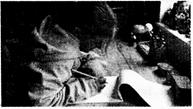
Whenever anyone measures educational success, East Asian countries are always top scorers. But in a recent league table, a European country, Finland, was top of the class. South Korea was still in second place, though. Britain was at number 6.
In Korea the school day is long—typically 7 or 8 hours, followed by hours of private tutoring in the evenings. All this hothousing leaves Korean students so tired, they sometimes fall asleep in class next day. Worries about the effects of late night cramming(填鸭式) led the government to force cramming schools to close by 10 pm. Finnish children spend the least time in class in the developed world, often finishing just after lunch, with about one hour of homework a day. Private tuition is uncommon. The British and American school day is quite long in comparison, around 6 hours, and secondary school pupils do 2 or 3 hours of self-study a night.
The Korean education system, like many in Asia, is intensely competitive, with students even competing to get into the best cramming schools, to help them get ahead. Finnish education is far less cut-throat. Classes are all mixed ability, and there are no league tables. British schools again occupy the middle ground, with quite high levels of competition for places at university, and schools and universities battling to come top of league tables for everything from exam results to student satisfaction. Korea and Finland both do well, yet their education systems are so different.
However, there are some similarities in Korea and Finland. In those countries, teachers have high status in society, and education is very highly valued. Those attitudes can't change quickly. But it can be done. They might be the star pupils now, but until the l970s, Finland's educational system was poor. Their thoroughly different approach to schooling has taken them to the top in just a generation.
小题1:The students spend the least time in school in .
A.the UK
B.Finland
C.the USA
D.Korea小题2:According to the text, we think in Korea .
A.students spend more time in studying
B.students are tired of studying in class
C.students leave their school early
D.students are always top scorers小题3:The underlined phrase “all this hothousing” in Paragragh 2 probably refers to .
A.private evening tutoring
B.self-study at home
C.long-hour study
D.school study小题4:From Paragragh 3, we can know that .
A.Finnish students are less stressed in study
B.there're also many cramming schools in Britain
C.students in Korea are the most competitive in Asia
D.British schools are less competitive than universities小题5:According to the author, the key to improving education is .
A.the attitude
B.the schooling time
C.star pupils
D.new teaching approach
小题1:B
小题2:A
小题3:C
小题4:A
小题5:A
题目分析:本文叙述了世界各地的学校存在的教育制度,文中叙述了英国、韩国、芬兰及美国等,它们各国的学校一天让学生学习的时间是不同的,它们的教育制度各有利弊。
小题1:这是细节理解题。根据Finnish children spend the least time in class in the developed world, often finishing just after lunch, with about one hour of homework a day.芬兰的教育在课堂上的时间较少,故选B。
小题2:这是细节理解题。根据In Korea the school day is long—typically 7 or 8 hours, followed by hours of private tutoring in the evenings.韩国的学生在课堂上7-8个小时,晚上还要进行辅导班,故选A。
小题3:这是词义猜测题。根据leaves Korean students so tired, they sometimes fall asleep in class next day. 长时间的学习,让韩国的学生感觉很累,故选C。
小题4:这是细节理解题。根据Finnish education is far less cut-throat.芬兰的学生压力小,故选A。
小题5:这是细节理解题。根据Those attitudes can't change quickly. But it can be done.故选 A。
点评:我们应当充分利用上下文猜测词义,即利用上下文中我们已经熟悉或明了的单词或短语,立足上下文语义,进行逻辑上的推理。通常我们可以通过分析构词法、语法以及同位关系、对比关系、因果关系等来推测,有时还需要借助平时所积累的常识和经验来判断。
